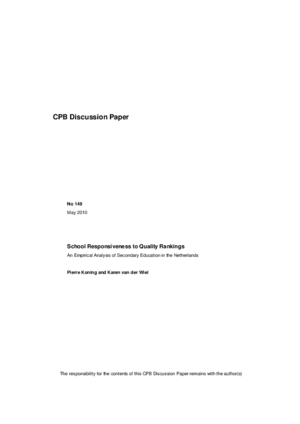School responsiveness to quality ranking: An empirical analysis of secondary education in the Netherlands
Kwaliteitsinformatie maakt verschil in voortgezet onderwijs
We are sorry, unfortunately there is no English translation of this page.
As from 1997, the national newspaper Trouw has published quality scores of secondary schools in every year, using information of the schools inspectorate on, amongst other things, the average grades at the final examinations and the throughput of pupils in lower forms. How do schools respond to the publication of the rankings?
We contribute to the literature in two respects. First, the current analysis is the first to address the impact of quality scores that have been published by a newspaper (Trouw), rather than public interventions that aim to track and improve failing schools. Second, our research design exploits the substantial lags in the registration and publication of the Trouw scores and takes into account all possible outcomes of the ratings, instead of the lowest category only.
Overall, we find evidence that school quality performance does respond to the Trouw quality scores. Both average grades increase and the number of diplomas go up after receiving a negative score. These responses cannot be attributed to gaming activities of the school board, as an improvement is also observed in the gaming-proof quality indicators. For schools that receive the most negative ranking, the short-term effects (one year after a change in the ranking of schools) of quality transparency on final exam grades equal 10% to 30% of a standard deviation compared to the average of this variable. The long-run effects are roughly equal to the short-term effects.
